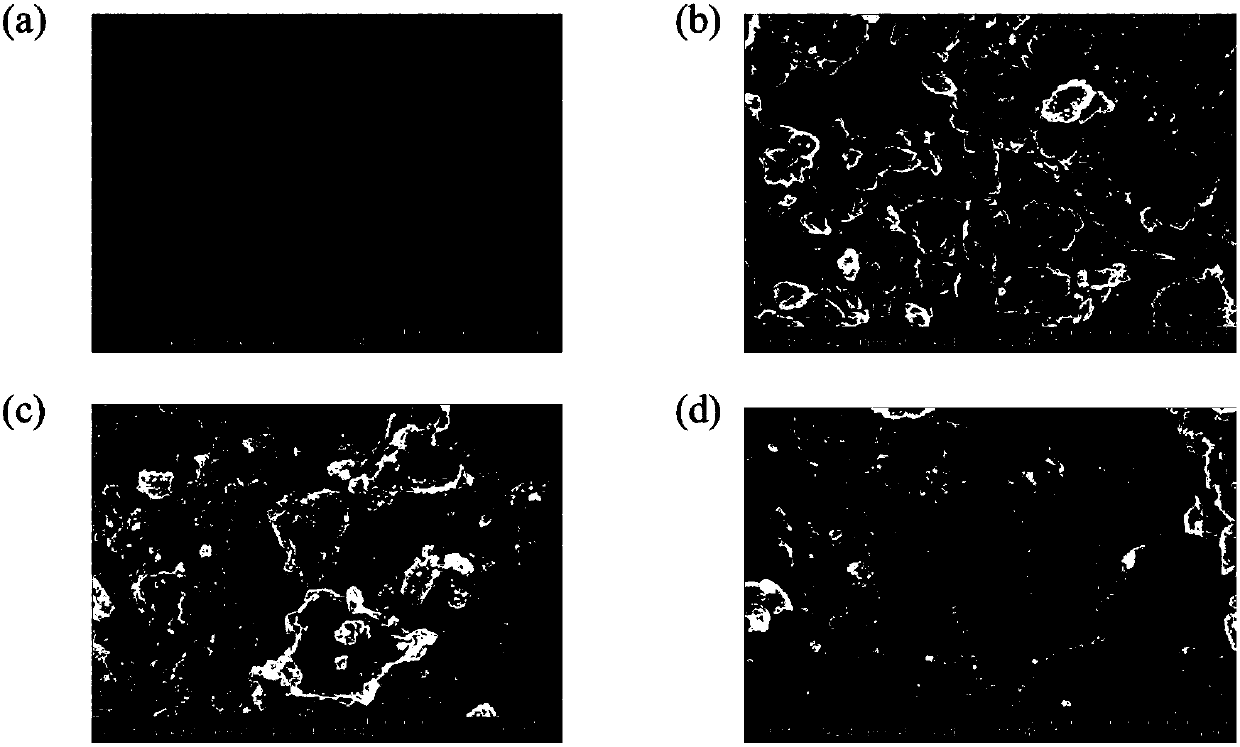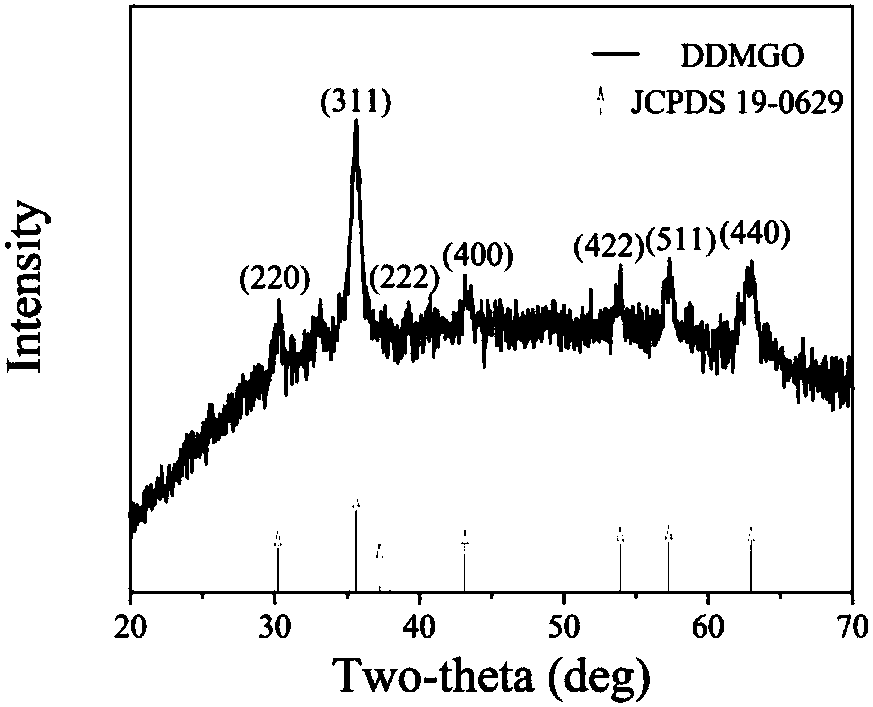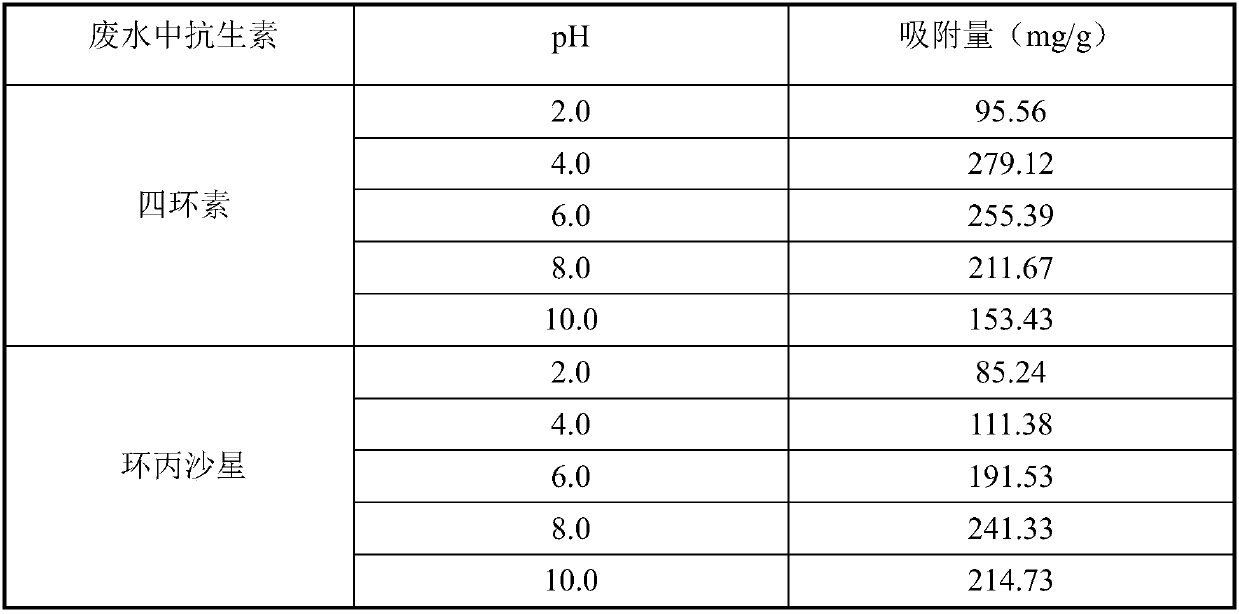Method for treating tetracycline and ciprofloxacin single and compound polluted water by using modified graphene oxide
A technology of stone oxide and graphene, applied in chemical instruments and methods, water pollutants, alkali metal compounds, etc., can solve the problems of difficult separation and limited adsorption sites of graphene oxide, and achieve low product toxicity and good adsorption effect. , the effect of simple preparation process
- Summary
- Abstract
- Description
- Claims
- Application Information
AI Technical Summary
Problems solved by technology
Method used
Image
Examples
Embodiment 1
[0022] 5~6g graphite powder, 4~6gK 2 S 2 o 8 , 4~6gP 2 o 5 and 20-30mL of 98% H 2 SO 4 Add it to a 1L Erlenmeyer flask, and stir in a 70-100°C water bath for 4-6 hours. Cool to room temperature, then add 0.5-2L ultrapure water to dilute and leave overnight. The supernatant was discarded, and the mixture was filtered and washed with deionized water until neutral. Oven drying at 50-60°C to obtain pre-oxidized graphite. Add the obtained pre-oxidized graphite into the Erlenmeyer flask, and then add 200-260mL of 98% H 2 SO 4 solution, while stirring, add 4 ~ 6g NaNO 3 , 25~35gKMnO 4 (Potassium permanganate is slowly added to the mixed solution with a medicine spoon), stirred and reacted in an ice bath for 3 to 6 hours. Then raise the temperature to 30-40°C for 1-2.5 hours, slowly add 400-700mL of ultra-pure water with a drop bottle and react at 90-100°C for 1-2 hours, after the mixture is cooled to room temperature, use 1-2L to remove Dilute with deionized water, add 3...
Embodiment 2
[0024] In TC and CIP solutions with different pH values, add the above-mentioned DTPA-modified magnetic graphene oxide composite material, comprising the following steps:
[0025] Add 2.30mg of DTPA-modified magnetic graphene oxide composite material to 25mL 50mg / L TC and 50mg / L CIP solutions respectively, adjust the pH to 2.0-10.0, and carry out oscillation adsorption reaction in a water bath constant temperature oscillator at 30°C. After 24 hours, pass The magnet separates the adsorbent from the waste water, and measures the content of unadsorbed TC and CIP in the waste water at 357 and 276 nm with a UV spectrophotometer. The calculated adsorption results are shown in Table 1:
[0026] Table 1: Adsorption data of adsorbents for TC and CIP under different pH conditions
[0027]
[0028] It can be seen from Table 1 that with the increase of pH, the adsorption capacity of the adsorbent to tetracycline and ciprofloxacin first increases and then decreases, indicating that pH p...
Embodiment 3
[0030] Add 0-20mg / L CIP to the 50mg / L TC solution, add 0-20mg / L TC to the 50mg / L CIP, and then add the above-mentioned DTPA-modified magnetic graphene oxide composite material, including the following steps:
[0031] Add 0-20mg / L CIP to the TC solution with an initial concentration of 50mg / L, and add 0-20mg / L TC to the CIP solution with an initial concentration of 50mg / L, and add 2.30mgDTPA to the two mixed solutions to modify magnetic graphene oxide composites. Oscillating adsorption reaction was carried out in a constant temperature oscillator in a water bath at 30°C. After 24 hours, the adsorbent was separated from the wastewater by a magnet, and the content of unadsorbed TC and CIP in the wastewater was measured at 357 and 276 nm with a UV spectrophotometer, and calculated. The adsorption capacity results are shown in Table 2:
[0032] Table 2: Adsorption data of tetracycline by adsorbent at different CIP concentrations
[0033] Concentration of CIP (mg / L)
[0...
PUM
 Login to View More
Login to View More Abstract
Description
Claims
Application Information
 Login to View More
Login to View More - R&D
- Intellectual Property
- Life Sciences
- Materials
- Tech Scout
- Unparalleled Data Quality
- Higher Quality Content
- 60% Fewer Hallucinations
Browse by: Latest US Patents, China's latest patents, Technical Efficacy Thesaurus, Application Domain, Technology Topic, Popular Technical Reports.
© 2025 PatSnap. All rights reserved.Legal|Privacy policy|Modern Slavery Act Transparency Statement|Sitemap|About US| Contact US: help@patsnap.com



